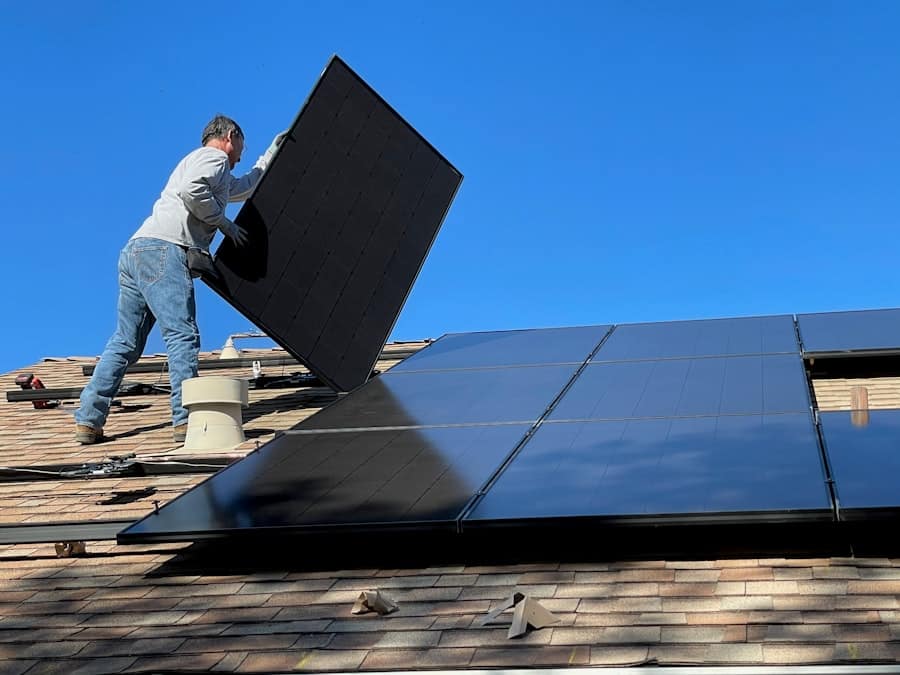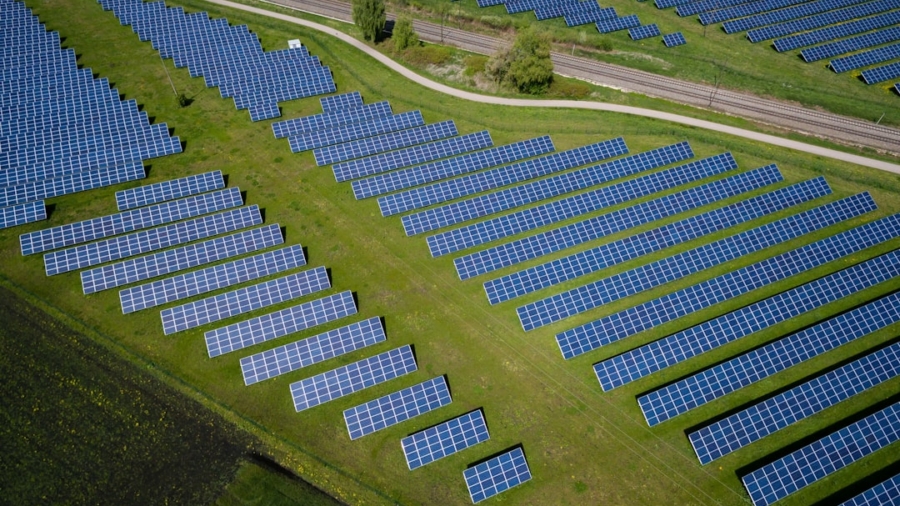The advent of green technology has revolutionized the manufacturing sector, ushering in a new era where sustainability and environmental responsibility are paramount. Green tech encompasses a wide array of innovations aimed at reducing environmental impact, enhancing energy efficiency, and promoting sustainable practices across various industries. As climate change continues to pose significant threats to ecosystems and human health, the manufacturing sector is increasingly recognizing its role in mitigating these challenges.
Carbon-neutral manufacturing, in particular, has emerged as a critical goal for companies striving to minimize their carbon footprints while maintaining productivity and profitability. Carbon-neutral manufacturing refers to processes that either eliminate or offset carbon emissions associated with production activities. This approach not only addresses the urgent need for environmental stewardship but also aligns with the growing consumer demand for sustainable products.
Companies are now investing in technologies and practices that enable them to produce goods without contributing to greenhouse gas emissions. This shift is not merely a trend; it represents a fundamental transformation in how businesses operate, driven by regulatory pressures, market dynamics, and a collective commitment to a more sustainable future.
Key Takeaways
- Green tech and carbon-neutral manufacturing aim to reduce environmental impact and carbon emissions in the manufacturing industry.
- Sustainable energy sources such as solar, wind, and hydro power are being increasingly utilized in manufacturing processes to reduce reliance on fossil fuels.
- Carbon capture and storage technologies are being developed to capture and store carbon emissions from manufacturing processes, preventing them from entering the atmosphere.
- Innovative materials and manufacturing processes, such as 3D printing and bio-based materials, are being used to reduce waste and energy consumption in manufacturing.
- Circular economy and closed-loop systems focus on minimizing waste and maximizing the lifespan of products and materials, promoting a more sustainable approach to manufacturing.
Sustainable Energy Sources for Manufacturing
One of the cornerstones of carbon-neutral manufacturing is the transition to sustainable energy sources. Traditional manufacturing processes have heavily relied on fossil fuels, which are significant contributors to carbon emissions. In contrast, renewable energy sources such as solar, wind, hydroelectric, and geothermal power offer cleaner alternatives that can significantly reduce the carbon footprint of manufacturing operations.
For instance, many manufacturers are now installing solar panels on their facilities to harness solar energy, which can be used to power machinery and lighting systems. This not only reduces reliance on non-renewable energy but also lowers operational costs over time. Wind energy is another promising avenue for manufacturers seeking sustainability.
Companies located in regions with favorable wind conditions can invest in wind turbines to generate electricity for their operations. A notable example is the Danish company Vestas, a leader in wind turbine manufacturing, which has integrated wind energy into its production processes. By utilizing the very technology they produce, Vestas exemplifies how manufacturers can lead by example in the transition to renewable energy.
Furthermore, some manufacturers are exploring the potential of biomass energy, which involves converting organic materials into energy. This approach not only provides a renewable energy source but also helps in waste management by utilizing by-products from other industries.
Carbon Capture and Storage Technologies

As manufacturers strive for carbon neutrality, carbon capture and storage (CCS) technologies have gained prominence as viable solutions for mitigating emissions from industrial processes. CCS involves capturing carbon dioxide emissions produced during manufacturing and storing them underground or repurposing them for other uses. This technology is particularly relevant for industries that are difficult to decarbonize, such as cement and steel production, where emissions are inherent to the chemical processes involved.
One notable example of CCS in action is the Boundary Dam project in Canada, which captures approximately one million tons of CO2 annually from a coal-fired power plant. The captured CO2 is then stored underground in geological formations, effectively preventing it from entering the atmosphere. Similarly, companies like Climeworks are pioneering direct air capture technologies that extract CO2 directly from the air, providing an innovative approach to offsetting emissions.
By integrating CCS technologies into their operations, manufacturers can significantly reduce their carbon footprints while continuing to meet production demands.
Innovative Materials and Manufacturing Processes
The quest for carbon-neutral manufacturing has spurred innovation in materials science and manufacturing processes. Traditional materials often come with high environmental costs due to their extraction, processing, and disposal. In response, researchers and manufacturers are exploring alternative materials that are more sustainable and have lower carbon footprints.
For instance, bioplastics derived from renewable resources such as cornstarch or sugarcane are gaining traction as eco-friendly substitutes for conventional plastics. These materials not only reduce reliance on fossil fuels but also offer biodegradability, addressing the growing concern over plastic waste. In addition to innovative materials, advancements in manufacturing processes are also contributing to sustainability efforts.
Additive manufacturing, commonly known as 3D printing, exemplifies this trend by enabling precise material usage and reducing waste. Traditional subtractive manufacturing often results in significant material waste as excess material is cut away during production. In contrast, 3D printing builds objects layer by layer, allowing for more efficient use of raw materials.
Companies like Adidas have embraced 3D printing technology to create footwear with minimal waste while also allowing for customization and rapid prototyping.
Circular Economy and Closed-Loop Systems
The concept of a circular economy is integral to achieving carbon-neutral manufacturing by promoting resource efficiency and minimizing waste. In a circular economy, products are designed for longevity, repairability, and recyclability, ensuring that materials remain in use for as long as possible. This contrasts sharply with the traditional linear economy model, where products are made, used, and disposed of without consideration for their lifecycle impact.
Closed-loop systems are a practical manifestation of circular economy principles within manufacturing. These systems involve reusing materials from end-of-life products in new production processes. For example, companies like Interface have pioneered initiatives to recycle old carpet tiles into new products, significantly reducing the need for virgin materials and minimizing waste sent to landfills.
By implementing closed-loop systems, manufacturers can not only reduce their environmental impact but also create economic opportunities through resource recovery and recycling initiatives.
Smart Manufacturing and Energy Efficiency

The integration of smart technologies into manufacturing processes has emerged as a powerful tool for enhancing energy efficiency and reducing carbon emissions. Smart manufacturing leverages data analytics, Internet of Things (IoT) devices, and automation to optimize production processes and resource utilization. By collecting real-time data on energy consumption and equipment performance, manufacturers can identify inefficiencies and implement targeted improvements.
For instance, General Electric has developed digital twins—virtual replicas of physical assets—that allow manufacturers to simulate different scenarios and optimize operations accordingly. This technology enables companies to predict maintenance needs, reduce downtime, and enhance overall efficiency. Additionally, smart sensors can monitor energy usage across various machines and processes, providing insights that help manufacturers adjust operations to minimize energy consumption during peak demand periods.
Moreover, energy management systems (EMS) play a crucial role in smart manufacturing by enabling real-time monitoring and control of energy use throughout facilities. By implementing EMS solutions, manufacturers can track energy consumption patterns and identify opportunities for improvement. This proactive approach not only leads to cost savings but also contributes to overall sustainability goals by reducing reliance on non-renewable energy sources.
Green Supply Chain and Sustainable Logistics
A comprehensive approach to carbon-neutral manufacturing extends beyond the factory floor; it encompasses the entire supply chain. A green supply chain focuses on minimizing environmental impact at every stage of production—from raw material sourcing to distribution and end-of-life disposal. Manufacturers are increasingly collaborating with suppliers who prioritize sustainability practices, ensuring that the materials they use align with their carbon-neutral goals.
Sustainable logistics is a critical component of this effort.
Companies like Unilever have implemented initiatives to improve transportation efficiency by utilizing alternative fuels and optimizing delivery routes through advanced logistics software.
By adopting electric vehicles or biofuels for transportation fleets, manufacturers can further decrease their reliance on fossil fuels while enhancing their sustainability credentials. Additionally, many companies are exploring local sourcing strategies to reduce transportation distances and associated emissions. By sourcing materials closer to production facilities, manufacturers can minimize the carbon footprint associated with logistics while supporting local economies.
Future Trends and Challenges in Carbon-Neutral Manufacturing
As the push for carbon-neutral manufacturing continues to gain momentum, several trends are emerging that will shape the future landscape of the industry. One significant trend is the increasing adoption of artificial intelligence (AI) and machine learning technologies in manufacturing processes. These technologies can analyze vast amounts of data to identify patterns and optimize operations for greater efficiency and reduced emissions.
However, despite these advancements, challenges remain in achieving widespread carbon neutrality in manufacturing.
Many manufacturers may face financial constraints that limit their ability to adopt sustainable practices fully.
Additionally, regulatory frameworks vary significantly across regions, creating complexities for multinational companies striving for uniform sustainability standards. Another challenge lies in consumer behavior; while there is a growing demand for sustainable products, price sensitivity remains a significant factor influencing purchasing decisions. Manufacturers must find ways to balance sustainability with affordability to ensure that eco-friendly products are accessible to a broader audience.
In conclusion, while the path toward carbon-neutral manufacturing is fraught with challenges, it also presents immense opportunities for innovation and growth within the industry. As companies continue to embrace green technologies and sustainable practices, they will play a pivotal role in shaping a more sustainable future for generations to come.
A related article to “How Green Tech Is Supporting Carbon-Neutral Manufacturing” is about the best software for 2D animation. This article discusses the importance of using efficient software tools to create visually appealing animations while also considering the environmental impact of digital production processes. To learn more about the best software options for 2D animation, check out

